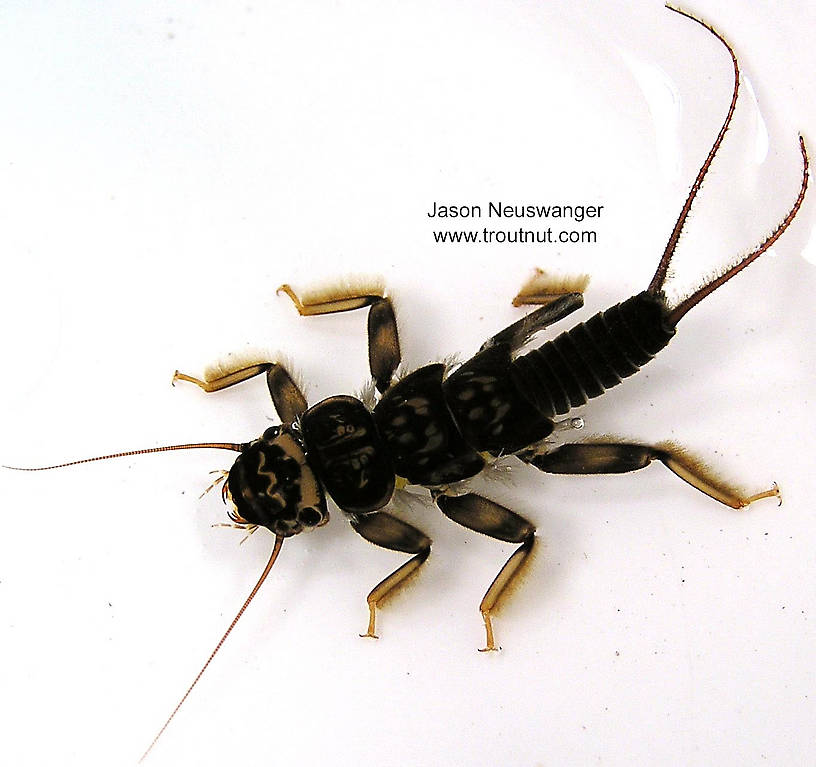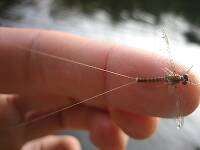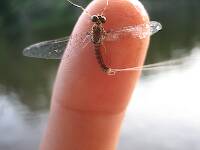
Salmonflies
Pteronarcys californica
The giant Salmonflies of the Western mountains are legendary for their proclivity to elicit consistent dry-fly action and ferocious strikes.
Featured on the forum

This wild-looking little thing completely puzzled me. At first I was thinking beetle or month larva, until I got a look at the pictures on the computer screen. I made a couple of incorrect guesses before entomologist Greg Courtney pointed me in the right direction with Psychodidae. He suggested a possible genus of Thornburghiella, but could not rule out some other members of the tribe Pericomini.

Troutnut is a project started in 2003 by salmonid ecologist Jason "Troutnut" Neuswanger to help anglers and
fly tyers unabashedly embrace the entomological side of the sport. Learn more about Troutnut or
support the project for an enhanced experience here.
Entoman on Mar 11, 2012March 11th, 2012, 4:14 am EDT
The head markings better match up with A. carolinensis (pronounced unbroken W, thick tapering occipital band). Another clue is the femora maculation. A. abnormis usually has either dark brown legs without obvious maculation or longitudinal dark stripes as opposed to the pale bands or blotches evidenced on this specimen. While a dark dorsal habitus is usually associated with abnormis, it is not a very dependable character. The other common species (lycorias) has head and leg markings that can look quite similar, but it has anal gills and usually a pale center with dark margins on the terga.
A. carolinensis
http://bugguide.net/node/view/515177
A. abnormis
http://www.troutnut.com/specimen/446
A. carolinensis
http://bugguide.net/node/view/515177
A. abnormis
http://www.troutnut.com/specimen/446
"It's not that I find fishing so important, it's just that I find all other endeavors of Man equally unimportant... And not nearly as much fun!" Robert Traver, Anatomy of a Fisherman
Quick Reply
Related Discussions
Topic
Replies
Last Reply
6
Mar 19, 2012
by Entoman
by Entoman
4
Mar 11, 2012
by Entoman
by Entoman
0
Apr 8, 2013
by Entoman
by Entoman
0
Jun 15, 2014
by Entoman
by Entoman
1
Oct 28, 2008
by GONZO
by GONZO
Re: Helopicus subvarians (Stonefly) common in New York waters!
In the Stonefly Genus Helopicus by Walleye
In the Stonefly Genus Helopicus by Walleye
6
Jan 9, 2014
by Entoman
by Entoman





